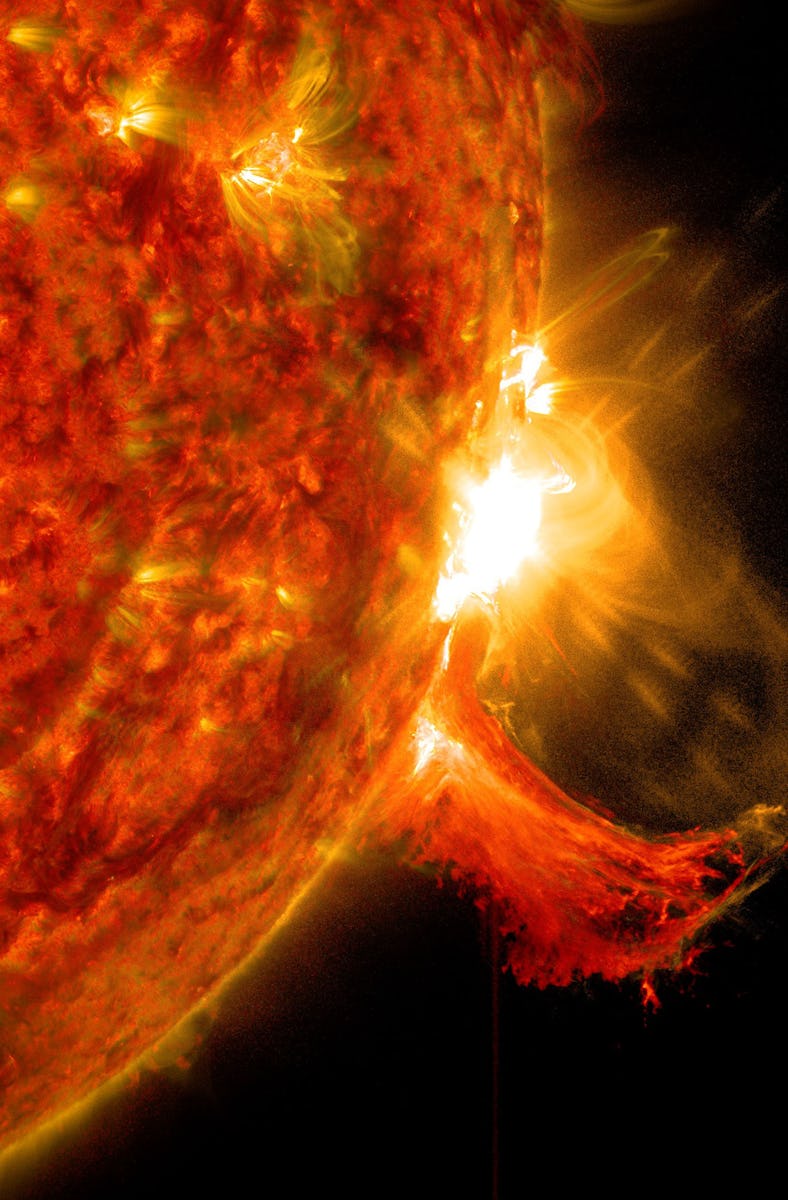The Sun’s Coronal Magnetic Field In Finally Coming Into Focus Like Never Before
This strange part of the Sun is getting probed.

Earth is at the mercy of the Sun’s changing temperament.
Solar storms are revving up, which makes a new exploration of the Sun’s activity more relevant than ever. In new research published Thursday in the journal Science, a team measured one of the drivers of the star’s volatility every other day for 8 months in 2022. The observations are a great leg-up from the irregular measurements taken in the past. This new information could help heliophysicists (scientists who study the Sun) peel back the curtain and better grasp the star’s mysteries as we wait for it to reach its activity peak next summer.
The team focused on the Sun’s corona, the wispy halo sky gazers view during a total solar eclipse. Specifically, they studied the corona’s magnetic field. It stores energy that, when released, heats solar plasma and triggers eruptions.
The Sun’s corona is all that can be seen during a total solar eclipse. This image shows the April 8, 2024 total solar eclipse from Lake Monroe, Indiana.
If these blasts fly off in Earth’s direction, a cascade of charged particles bombards the planet’s own magnetic field, triggering a ripple effect. “The solar magnetic field is the primary driver of solar storms, which can pose threats to power grids, communication systems, and in-space technologies like GPS,” officials at the National Center for Atmospheric Research (NCAR) of the National Science Foundation wrote in a description of the new study.
NCAR postdoctoral fellow Zihao Yang led the new study. “This research is helping us fill a crucial gap in our understanding of coronal magnetic fields, which are the source of the energy for storms that can impact Earth,” Yang said in the NCAR statement.
The team decided to create a three-dimensional look at this region. “The third dimension of the magnetic field, oriented along a viewer's line of sight, is of particular importance for understanding how the corona is energized leading up to a solar eruption,” according to NCAR.
This is an illustration of the global coronal magnetic field as the Sun rotates. The background is the solar corona observed in extreme-ultraviolet waveband. Overlapped on top are the global coronal magnetic field maps, measured at different times.
“Since coronal magnetism is the force that sends mass from the Sun flying across the solar system, we have to observe it in 3D — and everywhere all at once, throughout the global corona,” Sarah Gibson, NCAR scientist and co-author on the paper, said in the NCAR statement.
To achieve this, the team paired the world’s largest solar telescope, the Daniel K. Inouye Solar Telescope (DKIST) on the island of Maui, Hawai’i, with the smaller Upgraded Coronal Multi-channel Polarimeter (UCoMP).
The large telescope can take great detail of the Sun. The smaller instrument can capture a global field of view of the star. Together, they can measure the “twists and tangles” that drive solar eruptions.
With this equipment, the team were able to monitor the magnetic field’s evolution at different altitudes in the Sun’s outer atmosphere over the course of multiple solar rotations. As the star turned, variations in the magnetic field appeared. And active regions emerged.
Future projects could pick up the baton. Gibson, for instance, is the development lead for COSMO, the proposed Coronal Solar Magnetism Observatory. It’s undergoing its final design study. It has the potential to measure the evolution of the corona’s magnetic field on time scales ranging from decades, down to just minutes.
The Sun will take center stage over the next year. Its activity will reach the greatest peak it has seen in 11 years in July 2025.